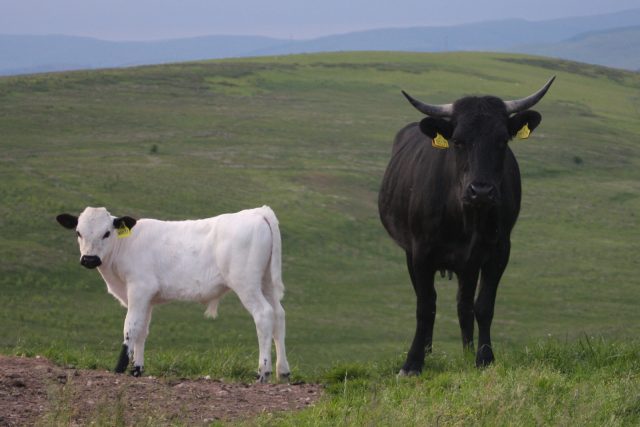Type the name of the breed you're looking for below
[wpdreams_ajaxsearchlite] Don't see the breed your're looking for? Click here and let us know!
Vaynol cattle
| Place of Origin | Great Britain |
| Origin | The Vaynol cattle originates from a herd in Scotland. The history of the breed dates back over 100 years, beginning with a semi-wild herd, originally established in 1872 in Vaynol Park, North Wales. It was kept there until the death of the owner Sir Michael Duff in 1980, when the estate was sold and it was moved to a series of locations in England. This type of herd has never existed in large numbers and the present type is descended from a small number of founders. Back in 1989 there was only one existing herd. Four years later the herd was purchased by the Rare Breeds Survival Trust (RBST) and moved four times in search of a permanent home. The original herd now resides at Temple Newsam Home Farm, West Yorkshire, in the United Kingdom. It is run by Leeds City Council. In 2009, the Vaynol cattle based at Temple Newsam was separated into two different herds for the first time. Three cows were brought to Lincolnshire, a county located 70 miles away from Temple Newsam. The beginnings of a third herd of this breed were formed in 2012 with the support of The Prince of Wales's Charitable Foundation. The donation enabled the RBST to purchase a Vaynol heifer called Templeson Ursula, which - together with its sister Una - is taken care of by RBST members Derek and Cindy Steen in Scotland. The Home Farm, which is open to the public, includes a barn which was built in 1694. It is the largest working rare breeds farm in Europe and the only one of 16 national farms being approved by the Rare Breeds Survival Trust . The Trust is responsible for the herdbook of the Vaynol and owns the majority of the breeding animals. The cattle mainly resides in large green meadows surrounded by barriers, in large estates and national parks. Like closely relate breeds such as the White Park and Chillingham cattle, the Vaynol is a remnant of the ancient white cattle that once roamed Great Britain. |
| Purpose | Beef and leather production. |
| Appearance | This endangered breed is very similar to the White Park cattle. The Vaynol cattle are primitive and angular in appearance with curved hocks and a sloping rump. They can be white with black spots or completely black. The colouring of the spots is found on the ears, eyelids, hooves, nose, on the point of the horns and they sometimes have black socks. The females can have black teats on their udders. |
| Horns | Males have long horns, developed outside of the head, which are flicked upwards. Females do not have horns. |
| Cows Average Weight | 300 – 350 kg (660 – 770 lbs) |
| Bulls Average Weight | 400 – 450 kg (880 – 990 lbs) |
| Other Considerations | The Vaynol cattle is one of the United Kingdom’s rarest breeds of cattle with less than 150 breeding animals registered in the UK. The Rare Breeds Survival Trust is a UK charity organisation, which aims to conserve and protect national rare farm animals from extinction. The cattle is currently listed as “critical” on the Rare Breed Survival Trust list. The Trust is trying to keep this rare breed alive by organizing the care of the still existing herds. One important measure is the setting in place of various breeding programs to avoid inbreeding, which is very dangerous within such a small number of animals. |



